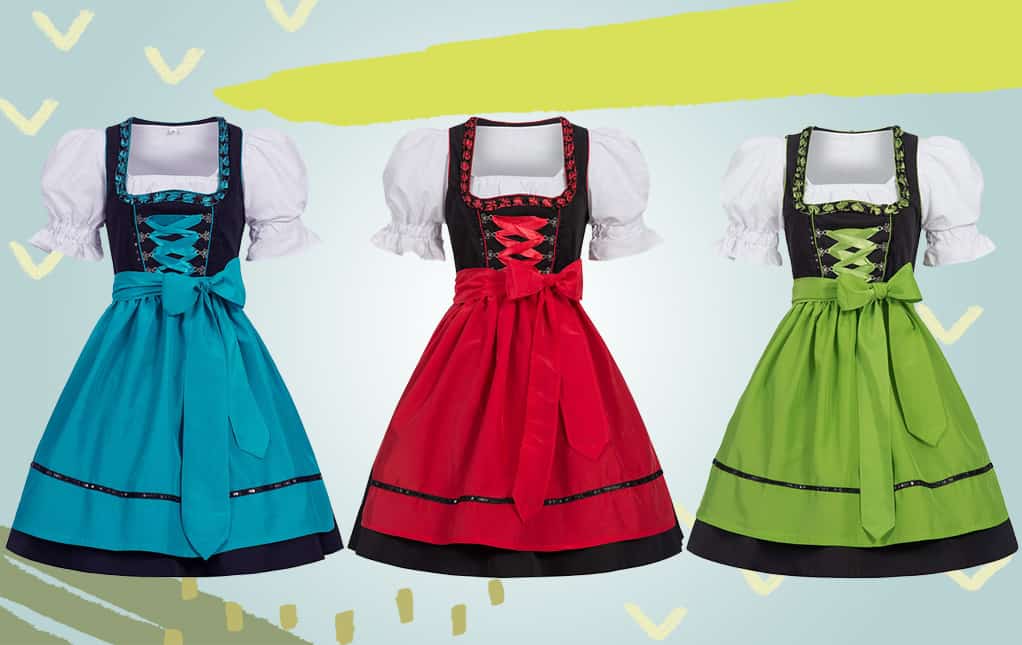Oktoberfest, one of the most famous festivals globally, brings together a vibrant mix of tradition, music, and plenty of beer. Held annually in Munich, Germany, the festival has grown into a global phenomenon, with similar celebrations happening in countries around the world. Amid the joyous chaos of traditional Bavarian music, delicious food, and enormous steins of beer, one thing remains a focal point every year – the colourful and eye-catching Oktoberfest costumes. In particular, the Oktoberfest costume for girls, known as the Dirndl, is a showstopper that enhances the festive atmosphere. But what makes these Oktoberfest Costume for girls so special? Why are they the star attraction of the festival?
A Tradition Rooted in History
The Dirndl is not just a costume but a significant part of Bavarian culture and tradition. Dating back to the 18th century, this traditional outfit was initially worn by working-class women, especially maids and farmers in Alpine regions of Austria, Bavaria, and Switzerland. The design was practical, consisting of a blouse, bodice, skirt, and apron, tailored for work in the fields and around the home.
However, over time, this humble attire evolved into a symbol of cultural pride. By the late 19th century, the Dirndl had become popular among upper-class women who began wearing it during outdoor activities. Fast forward to today, and the Dirndl has become an integral part of Oktoberfest celebrations, symbolising the joyous and festive spirit of the event.
The Anatomy of the Dirndl
A Dirndl is composed of several key elements that come together to create a traditional, yet stylish, look. Each part serves a purpose and plays a role in ensuring the costume stands out during the festival.
- The Blouse: Typically, the blouse is white and cropped, sitting just below the bust. It can be long-sleeved or short-sleeved, depending on personal preferences and the weather. The sleeves often feature lace, adding a delicate touch to the overall outfit.
- The Bodice: The bodice is the central piece of the Dirndl, providing structure to the outfit. Traditionally, it is made of high-quality fabric like silk or velvet, and it often has intricate details such as embroidery or lacing. The bodice is designed to accentuate the figure, creating a flattering silhouette.
- The Skirt: Flowing and graceful, the Dirndl skirt typically falls just below the knee, although variations exist with shorter or ankle-length options. Bright colours and floral patterns are popular choices, creating a fun and playful vibe.
- The Apron: No Dirndl is complete without the iconic apron. Tied around the waist, it serves both a decorative and symbolic function. In fact, the way the apron is tied can indicate the wearer’s relationship status. A bow on the left side signals that the wearer is single, while a bow on the right side indicates she is taken or married. If the bow is tied at the back, it traditionally means the wearer is widowed or a waitress.
The Modern Appeal of the Dirndl
While the Dirndl retains its traditional charm, it has also evolved into a fashion statement. Designers have given the classic costume a modern twist, offering a variety of styles, colours, and patterns that appeal to different tastes. From bold reds and blues to soft pastels and floral designs, there is a Dirndl to suit everyone. Some modern designs feature shorter skirts or more fitted bodices, allowing women to embrace contemporary fashion while staying true to the roots of Bavarian culture.
One of the reasons the Dirndl has become the star attraction at Oktoberfest is its versatility. Whether you want to stick to a classic design or experiment with modern styles, the Dirndl allows for personalisation, making each outfit unique. Accessories such as hats, flower crowns, necklaces, and traditional shoes known as Haferlschuh further elevate the look.
The Symbol of Oktoberfest Joy
Ultimately, the Dirndl is more than just a costume – it embodies the spirit of Oktoberfest. Wearing a Dirndl allows festival-goers to fully immerse themselves in Bavarian culture, bringing a sense of tradition, elegance, and fun to the celebration. The outfit, with its vibrant colours and intricate details, creates a sense of unity among women at the festival, as they all come together to enjoy the music, food, and festivities.
Summing up, the Oktoberfest costume for girls – the Dirndl – is undeniably the star attraction of the festival. Steeped in history and tradition, yet continually evolving with modern trends, the Dirndl perfectly captures the festive atmosphere of Oktoberfest. Whether worn for cultural pride or as a fashion statement, the Dirndl allows women to stand out and celebrate in style, making it the ultimate symbol of the world’s largest beer festival.
